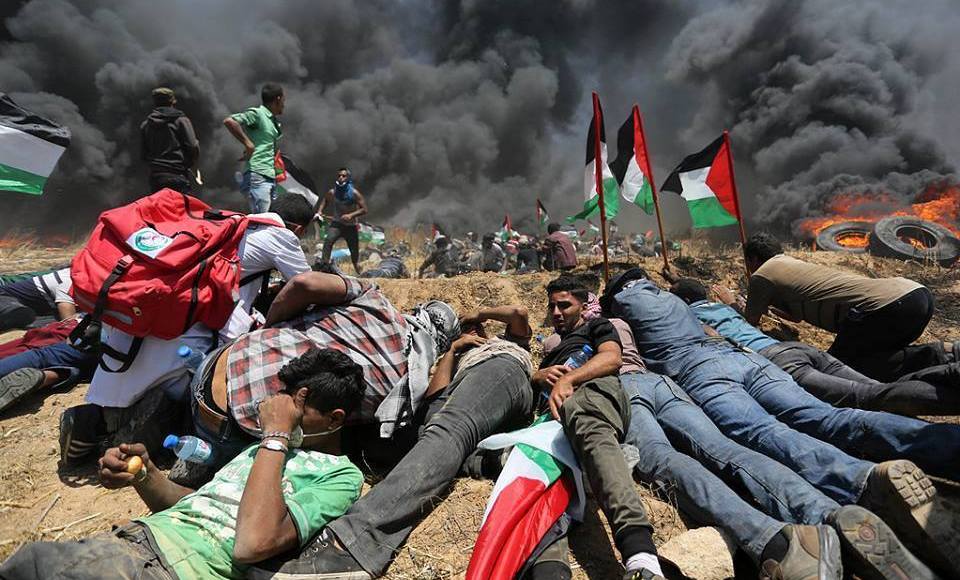71 years of the Nakba: tribute and solidarity to the Palestinian resistance

“Humanity has to be judged for that crime, for putting us as objects on a shelf. We suffer a lot. It is the land of our grandparents, our parents died with a great void. Who will return the empty pride of our parents? My land, my land … if they gave me the whole world, I would not accept, only my land … Palestine is a name and a body, a kind thing that is never forgotten. Palestine is different, if I use the same oven in another place, the taste is different. Everything in Palestine is beautiful. ” The intervention of Tawfiq Abder Rahim reveals the rebellion with the injustice committed against his people, identity and nostalgia in relation to the land from which he was torn up 71 years ago.
By: Soraya Misleh
He is one of the survivors of the Nakba – an Arabic term that designates the Palestinian catastrophe represented by the creation of the State of Israel on May 15, 1948. He lived in tiny Qaqun, one of about 500 villages destroyed that year. Him and his family were part of the 800,000 Palestinians expelled from their lands -80% of the native inhabitants at the time-, based on the ethnic cleansing planned for the realization of the Zionist project (of formation of a homogeneous exclusive jewish State). The society was entirely fragmented and the question of the Palestinian refugees began, the longest of the contemporary era. Today, they amount around five million in the Arab world alone.
Abder Rahim lives in one of them – Baqaa, in Amman, Jordan. The feeling expressed in his words is common among refugees. A place from where they were uprooted, but in which their roots were left. Feeling that is passed from generation to generation. In 1948, the Zionist project of creating a homogeneous, exclusively Jewish state on Palestinian land could not foresee that. “The old will die, the young will forget,” said the Israeli prime minister that year, one of the architects of the ethnic cleansing of the Palestinian people, David Ben Gurion. The Palestinian resistance has shown that he was wrong.
Resistance that occurs in an everyday marked by exile and occupation, transformed in the act of remaining inland or refusing to forget and be erased from history. Resistance in the affirmation of a child that is born in a refugee camp and knows exactly where it belongs and where it originated. “It’s our land, we’ll be back,” he says. Resistance of stones against tanks, who have given their lives for collective freedom.
It is what you see today in the streets of Palestine. If on the one hand Israel deepened colonization and apartheid in these 71 years, on the other hand, youth rise up and challenge occupation. Born from the infamous Oslo agreements, signed in 1993 between the Palestine Liberation Organization (PLO) and Israel – which created the Palestinian National Authority (PNA) to manage the occupation, including security cooperation agreements with Israel -, that youth is also against their traditional leaders.
This May 15, the resistance in Palestine, in the fields, in the diaspora, and international solidarity, the 71 years of the Nakba are remembered in protests that denounce its continuity and repudiate Trump’s “agreement of the century” proposal , one more attempt to liquidate a cause whose genuine brand is never to give up. To the threats of new massacres and / or hunger of the entire population under occupation if the Palestinian leaders do not sign that death sentence, our response comes in the verses of the revolutionary poet Tawfiq Ziyad: “When we are thirsty, we will squeeze the stones. And we will eat earth when we are hungry. But we will not leave. And we will not be greedy with our blood. Here we have a past and a present. Here is our future. ”
At 71 years of the Nakba, our tribute to the heroic resistance. Our commitment to constantly echo their actions and voices, which challenge the Zionist project and clamor for international solidarity, raising the flag of BDS (Boycott, Divestment and Sanctions) to Israel. Voices that do not silence and fight for a day to sing the song of freedom in Palestinian lands.
Translated by Blas




